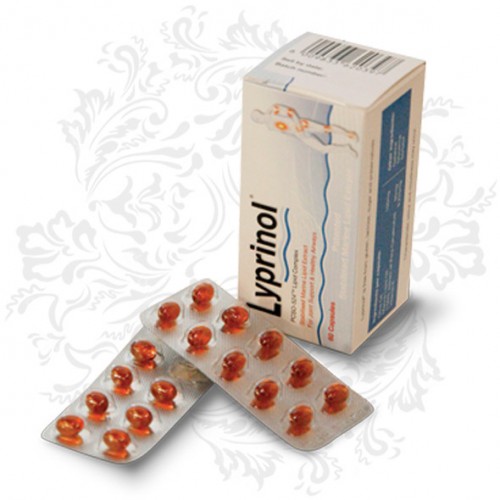
Omega 3 and 6: The Inside Story
Adverts, products and articles all stress the importance and benefits of the omega fatty acids and this flood of information can often leave one feeling confused about what they are, how they differ and what they do.
The two important omegas are omega 3 and omega 6. Both are regarded as essential fatty acids – essential, because the body cannot produce them and we have to get them either through foodstuffs or supplements.
Omega 3
Fighting inflammation is omega 3’s main function. This is critical, as so many life-threatening and debilitating diseases are caused by inflammation. These include asthma, rheumatoid arthritis and heart diseases, such as heart attacks, atherosclerosis, strokes (studies have shown that a balanced intake of omega 3 can reduce it by up to 27%) and arrhythmia (irregular heart rhythm). In fact, The South African Heart Foundation now recommends the use of omega 3 to prevent heart disease and to improve the immune system.Recent studies are showing that omega 3 can also play an important role in preventing and treating depression, osteoporosis and cancer.
One of the omega 3 PUFAs, alpha-linolenic acid (ALA) is the precursor to the two most important essential fatty acids (EFAs) - eicosapentaenoic acid (EPA) and docosahexaenoic acid (DHA). EPA and DHA regulate cell activity and maintain a healthy cardio-system, including the prevention of blood clots. DHA also plays a crucial role in the development of mental abilities in children, improving memory in older people and building bone density.
If your omega 3 levels are too low, you could also start experiencing exhaustion, digestive complications, depression, lack of concentration, aching joints, skin problems and brittle hair and nails. If you start supplementing your diet in some way with omega 3 from fish oil, it is important to ensure that it contains both DHA and EPA as, studies have shown that when they are taken separately, they are not as effective.
Omega 6
Omega 6, which is found in the oils of seeds and grains (sunflower, corn, soy and wheat), is as important as omega 3 in keeping the body healthy. It stimulates hair growth, keeps the skin in good condition, builds bone mass, regulates the metabolism and blood pressure and maintains the health of nerve endings. However, in contrast to omega 3, it thickens the blood and causes inflammation. It does this by converting arachidonic acid into prostaglandins and leukotrienes, which encourage the inflammatory response when we are ill or hurt. Under normal circumstances, this is good; however, if we consume too much omega 6, it promotes a constant low-grade inflammation which can lead to illnesses such as heart disease, arthritis and asthma.
Therefore, for the body to remain healthy there needs to be a balance in the amount of omega 3 and 6 that we consume because, as mentioned, omega 6 encourages inflammation and omega 3 curbs inflammation. The World Health Organisation recommends a omega6:omega 3 ratio of 5:1, but in reality our ratios are closer to 20:1 and in some cases, it can be as high as 50:1. This happens when we consume food that either contains or is fried in vegetable, canola or sunflower oil (all omega 6-rich) and when we do not eat enough fish, flaxseed and green leafy vegetables, which are rich in omega 3.
Sourcing Omega 3 Naturally
The richest source of omega 3 comes from the oil of the New Zealand green-lipped mussel (Perna canaliculus) and is the most studied natural alternative known to provide relief from inflammatory conditions. This has been patented globally as Lyprinol PCSO-524® and has just become available in South Africa from Master Health Products.
It has an extremely high content of EPA, DHA, eicosatetranoic acid (ETA) and octadecatetranoic acid (OTA) and together, these PUFAs are exceptionally successful in inhibiting inflammatory producing enzymes, such as 5-lipoxygenase (5-LOX) and cyclooxygenases (COX-1 + COX-2). These enzymes are predominantly to blame for inflammatory diseases such as osteoarthritis, rheumatoid arthritis and asthma. ETA and OTA are not found in any fish oils, making Lyprinol oil unique and more powerful than fish oils in creating and maintaining health. Studies have shown it to be twice as effective as certain non-steroidal anti-inflammatory drugs (NSAIDs) but, without the side-effects. These include Indomethacin & Ibuprofen.
Even people who are allergic to seafood and shellfish can safely use the green-lipped mussel oil as, it contains no protein.
Dr. Howard Peiper, N.D., a Pulitzer Prize nominee and prolific author of nutritional and natural health books, had the following to say about this New Zealand green-lipped mussel (Lyprinol):
“I highly recommend the lipid oils from greenlip mussels to my clients, and personally take this very powerful omega 3 product. I also have recently revised my “The ADD and ADHD Diet”, “The Secrets of Staying Young” and “Senior Moments” to include information on greenlip mussel and the benefits.”
Link to original article: http://moxxor.subtleenergysolutions.com/Omega3-WholeStory.pdf



